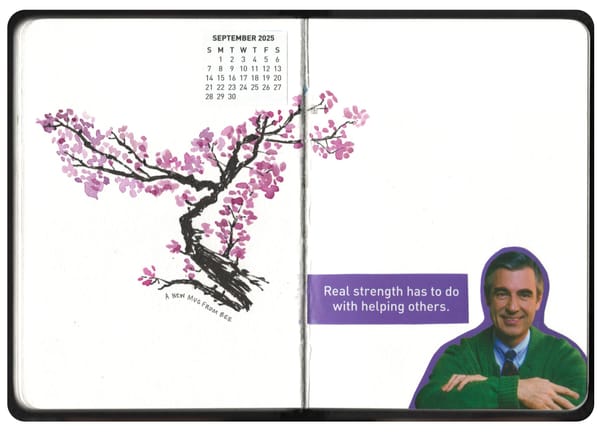A brief guide to time blocking
If you’ve been feeling squeezed for time lately (overbooked and overwhelmed, anyone?) here’s a short read on how to reclaim some of your precious time and avoid pre-appointment limbo.

Meetings are oftentimes essential; however, they tend to consume a lot more of our day than their innocent calendar slot could have you think.
There might be an actual term for this, but for now, let’s just call it “pre-appointment limbo”: that span of ~30-60 minutes before an appointment is set to begin when our focus is pulled ahead of schedule into a mental waiting room of sorts.
Pre-appointment limbo is where our minds begin pre-processing what will be. The appointment itself hasn’t yet begun, but we’re already devoting precious attention to living ahead of the current moment, thereby pulling us out of the present moment.
When this happens, it feels like limbo. It’s not quite here. It’s not quite there. It’s not quite anywhere. Limbo can sap your focus, consume your thoughts, and leave you looking in the rear-view mirror at the end of the day wondering where time went.
Thankfully, limbo can be avoided (mostly) with a helpful time management strategy called time blocking.
What is time blocking?
Time blocking (or time chunking, as I also like to think of it) is a time management method where you schedule your day (or week, month, etc.) into time blocks dedicated to specific tasks.
These time blocks can vary in duration and are meant to help keep you focused throughout your day so when you experience an interruption, lull, or the onset of limbo, you can refer to your calendar to get back on track.
Time blocking helps you tackle your day with intention instead of turning to compulsive scrolling.
How to start (know how you work)
Time blocks work best when you know what times of day you’re best suited to do certain types of work. If you tend to be more focused in the morning, try to schedule your most challenging work early in the day to specifically tackle your most challenging tasks. Alternatively, if you’re more likely to get into flow in the afternoons or evenings, try to schedule your deepest thought work during these periods.
What to time block
If you’re new to time blocking, it might help to start small and just block one daypart initially.
For example, try scheduling two hours of time-blocked time into your schedule. I have my calendar divided into 30-minute intervals and try to schedule my most demanding work during mornings.
I prefer 30-minute intervals because they fit within the standard Pomodoro model which has worked well for me for many years (a standard Pomodoro is a 25-minute session of focused work followed by 5 minutes of rest).
For my most focused work, I schedule longer time blocks with two, consecutive Pomodoros followed by a short break.
I’m also mindful to schedule breaks into my workday for movement, a snack, and lunch. Overlooking essential breaks can not only throw off your schedule, but doing so is not a sustainable, long-term strategy.
A morning of mine could look something like this:
7:30-8:00 Journaling (Morning Pages)
8:00-8:30 Emails
8:30-10:00 Meetings
10:00-10:30 Move/exercise, grab a snack
10:30-11:30 ‘The One Thing’ (determined in my Morning Pages)
11:30-12:30 Meetings
As you grow more comfortable with time blocking and find value in the practice you might want to incorporate more time blocks into your days.
Some people block their entire day (from when they wake up to when they go to sleep). Personally, I’ve found it helpful to stick to time blocking my full workday and only loosely time blocking my evenings. I have a daily commitment to myself to disconnect from tech by 9:00 pm and turn to journaling and drawing as a wind-down activity.
Remember the purpose of time blocking
Time blocking has helped me find more time to focus on reading, art, exercise, self-development, writing, listening to podcasts, and a lot of other wonderful things. If you decide to give time blocking a try, keep in mind your personal intention for the practice as you create your own schedule. What would you do with more time?
Time blocking is meant to help you focus and provide more flexibility. If you pay close attention to your daily rhythms and tendencies and create a schedule that works best for your own unique needs, you might discover plenty of little pockets of time that have the potential to give you back time for the things that matter most.




